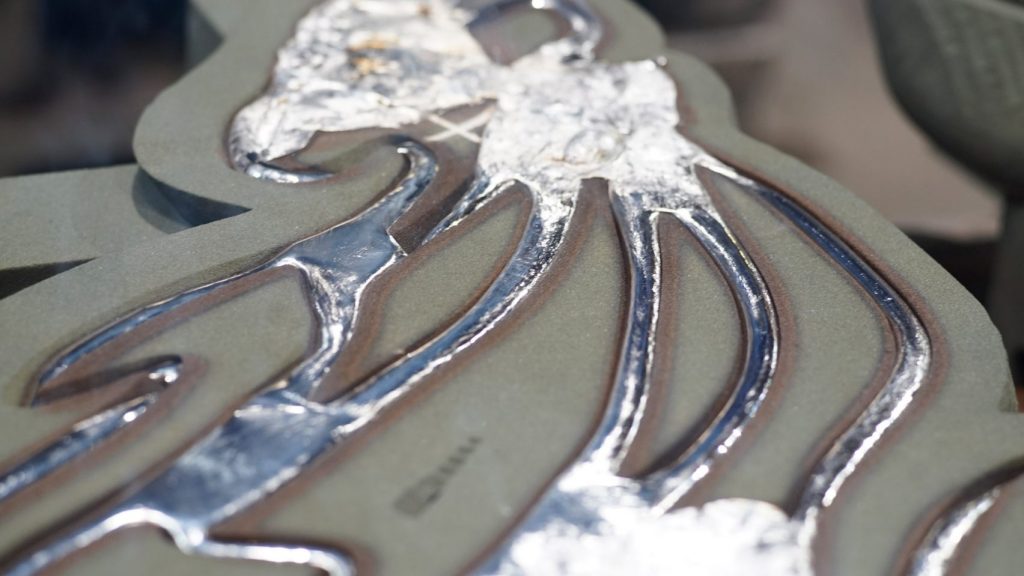Over the space of two months, researchers on the MAS Digital Fabrication team at ETH Zurich created an experimental metal facade using 3D printed sand molds.
Composed of 26 individual pieces and standing 3.5 meters high the so-called Deep Facade combines “the geometric freedom of 3D printing with the structural properties of cast metal,” to realize new possibilities in architecture.
Computational design + robots + 3D printers
The Master of Advanced Studies ETH in Architecture and Digital Fabrication (MAS ETH DFAB) is a year long program set up to explore computational design, robotic fabrication and 3D printing for construction. Deep Facade is the latest product of this program, and follows suit of an overarching project at the university called Digital Metal (Not to be confused with the Swedish metal 3D printer manufacturer of the same name).
In Digital Metal large scale metal parts are molded from aluminum using 3D printed sand casts. Computational techniques, that appear similar to generative design from the multiple versions in the video above, are used to create these parts based on set parameters, i.e. maximum edge length, minimum distance between lines etc.

Binder jet technology
Deep Facade was created by the MAS ETH DFAB team in collaboration with Swiss foundry Christenguss AG, die cast specialist DGS Druckguss Systeme and 3D printer manufacturer ExOne.
ExOne’s range of production and prototype 3D printers work using binder jet technology, where loose, powdered material, is fused together by the precise jetting of a liquid.
3D printed architectures
Though casting is an age old construction technique, the method is often too time-consuming and expensive to consider in large-scale building projects.
At New York based architectural design studio EDG a similar project, this time for concrete casting, is examining ways 3D printed casts can be used to restore the facades of old buildings. In the UAE, Immensa Technology Labs has also filed a patent for this kind of construction technique, which will be used to construct new buildings in Dubai.
With Digital Metal the MAS ETH DFAB team hope to create a revival of this old techniques. In an article for Dezeen, ETH Zurich senior researcher Mania Aghaei Meibodi explains, “With our approach using 3D-printed moulds, we make it possible and affordable again to fabricate bespoke structural metal parts — parts with unseen richness of detail and geometric complexity.”
For more 3D printing in construction news subscribe to the 3D Printing Industry newsletter, like us on Facebook and follow us on Twitter.
Got your own ideas for innovation? Apply them to a new role with 3D Printing Jobs here.
Featured image shows Digital Metal: Deep Facade from the MAS Digital Fabrication team at ETH Zurich. Photo via Dezeen/ETH Zurich



